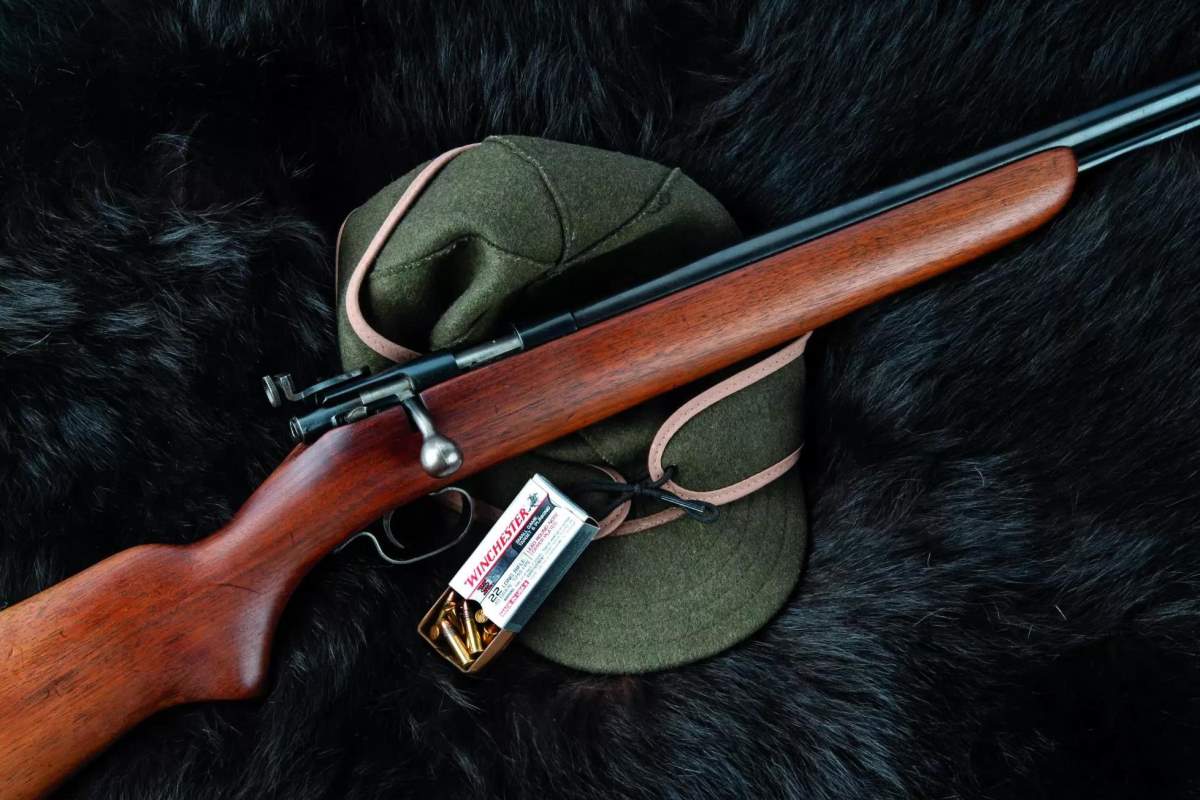A first for Winchester, this Model 72 tube-fed bolt-action rimfire was a winner.
This sleek, long, bolt-action .22 was not one of Winchester’s more famous models. It was sandwiched between the legendary Model 52, which was a match-grade competition rifle capable of winning on national stages, and the more common Model 69—both of which were magazine-fed.
In fact, the Model 72 is a close derivative of the Model 69, a fine rimfire designed by Winchester’s Frank Burton and introduced in 1935. Its primary differences are the tubular magazine and the two-position safety at the right rear of the action. Interestingly, sources list the Model 72 as Winchester’s first tube-fed bolt-action design.
Announced in 1938, the Model 72 was intended to provide accuracy and balance combined with the high magazine capacity that was becoming popular in competing rifles from entry-level manufacturers. Thus, the tubular magazine, which was advertised to hold 20 .22 Short cartridges, 16 rounds of .22 Long, and 15 of .22 Long Rifle.
Several variations were offered, mostly based on sighting equipment. The standard version (shown here) had a unique receiver-mounted aperture sight. These rifles were not fitted with rear sights on the barrels and were not even dovetailed or drilled and tapped for rear barrel sights. The receivers were not drilled and tapped or grooved for mounting a scope, either.
A version could be ordered with a rear barrel sight instead of the peep sight. Another version was available with scope bases mounted to the barrel, and purchasers could opt for a 2.75X scope or a 5X scope. Scoped models were not hugely popular in America at that time, so most of them found their way to England.
During the early years of World War II, a standard Model 72 was priced at $14.70. From 1938 to 1943, when all American arms factories shifted to producing fighting firearms, Winchester manufactured 40,566 Model 72s. A year after the war ended production ramped back up, and 120,434 Model 72s rolled off the line before the model was discontinued in 1959. By that point the list price had more than doubled. In all, 161,412 were made, including the slightly modified Model 72A, which had a backswept bolt handle and nickel-plated trigger, trigger guard, and bolt.
Model 72s were never serial-numbered, so it is nearly impossible to date one precisely.
Aside from being Winchester’s first tube-fed bolt-action design, the Model 72 has a couple of interesting features. Most obvious is the rear peep sight. It features a pivoting body with a considerable amount of vertical adjustment, measurable via a resettable reference scale. Once set, a knurled thumb screw was used to lock the sight in place. Loosening the well-made aperture itself allowed windage adjustment in a horizontal slot. Less obvious is the cock-on-close design of the cocking mechanism.
To load a Model 52, turn the knurled head of the magazine tube to unlock it and draw out the tube until the loading gate in the tube opens. Drop cartridges in until full (I could squeeze in only 14 rounds of .22 LR even though specifications suggest the Model 72 holds 15). Push the magazine tube back in and rotate it to lock.
Model 72 actions are tight, well built, and lock up with nice consistency. Fresh cartridges are presented to the chamber by the lifter assembly, which is fed by the tubular magazine. The non-rotating boltface pushes them forward into the chamber. Lockup is via the bolt handle, which interfaces with a locking recess. Extraction is achieved by two robust extractors at 3 and 9 o’clock. A notch in the left-side steel feed lips serves as a simple but strong ejector.
Like many rifle designs of the era, the Model 72 is a takedown. Just one screw secures the action into the stock, and it’s made to be unscrewed with a penny. Once the screw is loose, the barreled action can be lifted out of the stock.
Provenance
I bought the Model 72 used for this report at Neal’s Gunshop located in the north end of Cache Valley, Utah. Gary Neal knew little of this Model 72’s history, but judging by the condition of the wood and metal, which showed nearly no wear at all, it had been barely used. I just couldn’t leave without it.
